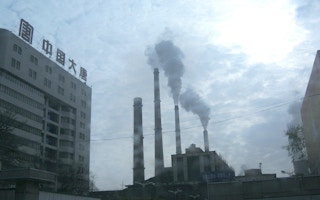The United States and China are the world’s two largest economies. They are also the two largest producers and consumers of coal, and the largest emitters of carbon dioxide. In recent years, however, their paths on coal have started to diverge.
Over the last few years, coal consumption has dropped dramatically in the United States, mainly due to low natural gas prices. In response to weak domestic demand, the US coal industry has been rushing to find its way out to the international market. Last year, US coal exports hit a historical high of 114 million metric tons.
However, it is worth noting that the shift away from coal in the US may not be permanent. As my colleague, Kristin Meek, pointed out in an earlier blog post, coal use in the US power sector was on the rise again towards the end of 2012, likely driven by the new uptick in natural gas prices.
On the other side of the globe, China’s appetite for coal continues to grow. In response, Chinese power companies are looking to tap the international coal market for sources that are more reliable and cost competitive. Among those markets is the United States. In 2012, China imported 290 million metric tons of coal. China was the third largest destination for US coal exports, behind the Netherlands and the U.K.
Last month, I participated in an event, US-China Coal Value Chain Exchange Conference, hosted by the Carnegie Endowment for International Peace, where I was a panelist on a session on “The Management of Coal in the United States.” I was joined by Carlos Alvarez from the International Energy Agency and Scott Smouse from the US Department of Energy and the National Energy Technology Laboratory, who talked about the importance of the Chinese coal market for the future of the US coal industry.
What are the prospects for US coal exports to China?
While many in the US coal industry see great potential in the China export market, the long-term prospects may not be as promising as many in the industry hope.
The economic risks in the coal power industry in China should not be overlooked. The continuing poor performance of China’s coal-fired plants has caused a significant decrease in coal-related investments over the last few years. Additionally, increasing public concerns over the local environmental problems, especially around local air pollution, have moved environmental measures near the top of the agenda of the country’s new leadership. Finally, other coal-exporting countries such as Australia and Indonesia are located closer to the Pacific market, and stiff competition could make US exporters less successful in that market.
Furthermore, there are signs that China’s demand for coal may peak before the end of this decade, followed by a deep and long-lasting decline. As Smouse pointed out at the recent event, the potential for increasing US coal exports to China will also be greatly influenced by the construction of major coal export terminals. The risk is that by the time these new export facilities in the United States are ready, the boom of China’s coal imports may have passed.
Despite the fact that the United States and China are diverging in their roles, they still have much in common, including their reliance on fossil fuels. If we are serious about a shifting toward a more sustainable future, the United States and China should look beyond short-term economic opportunities. There are clearly many opportunities for collaboration and economic growth that go beyond the coal market and could lead to a cleaner and more secure future.
This article was provided by the World Resources Institute and originally appeared here.










